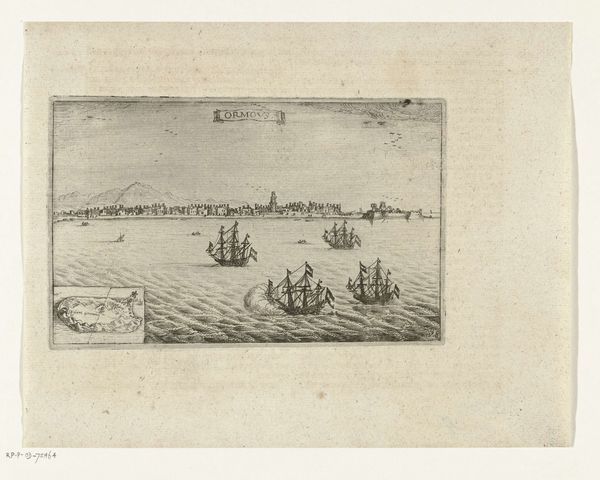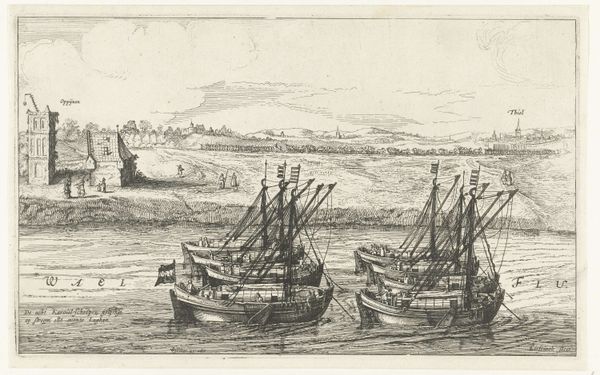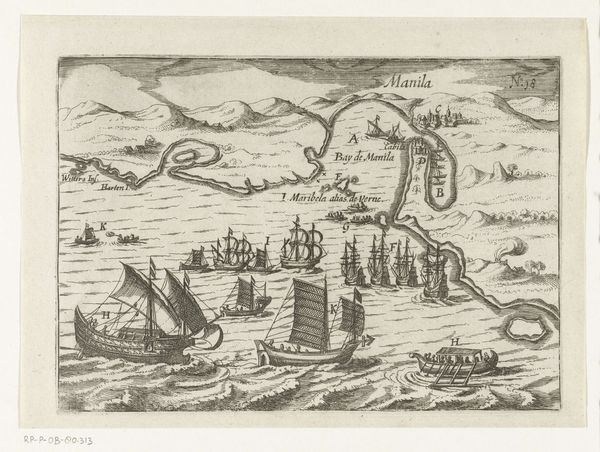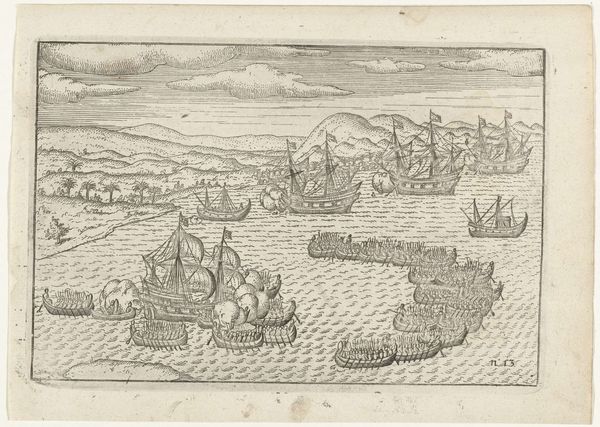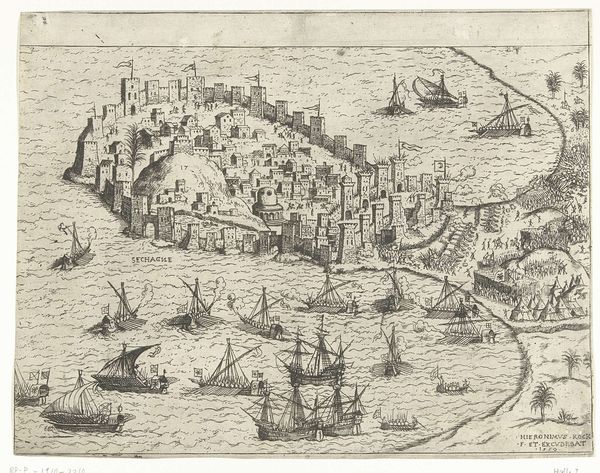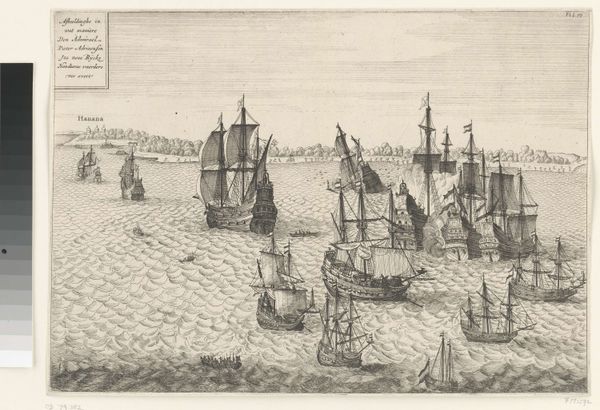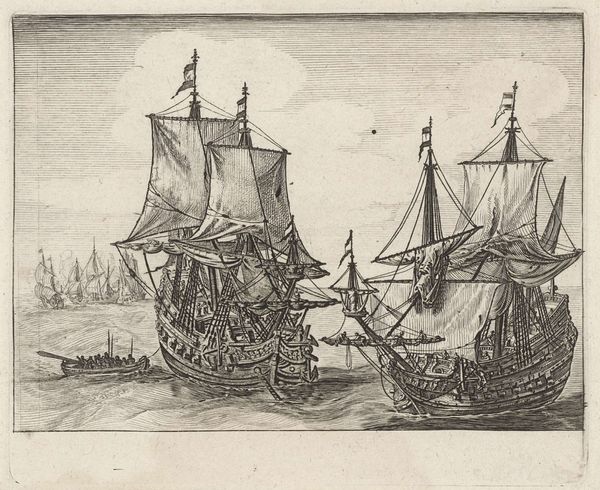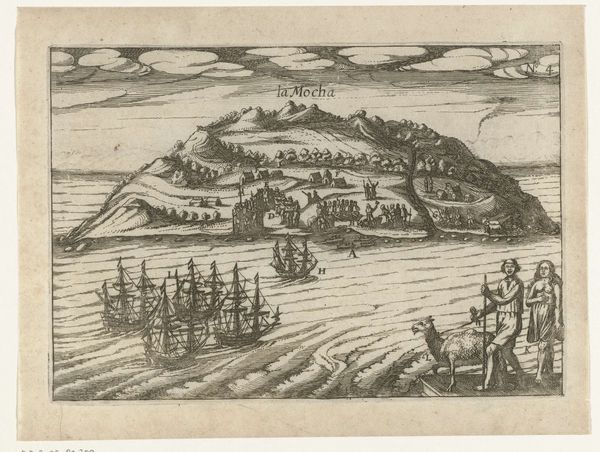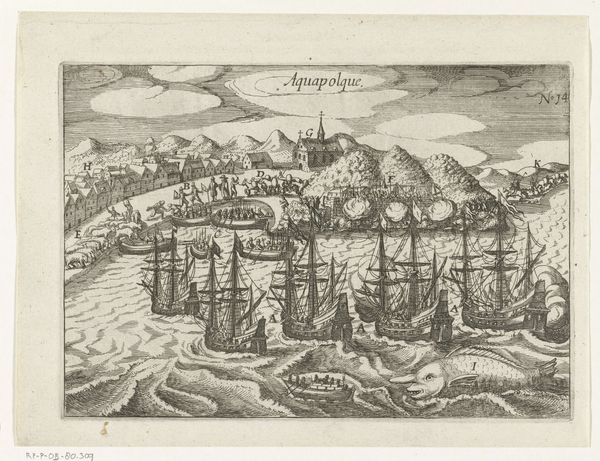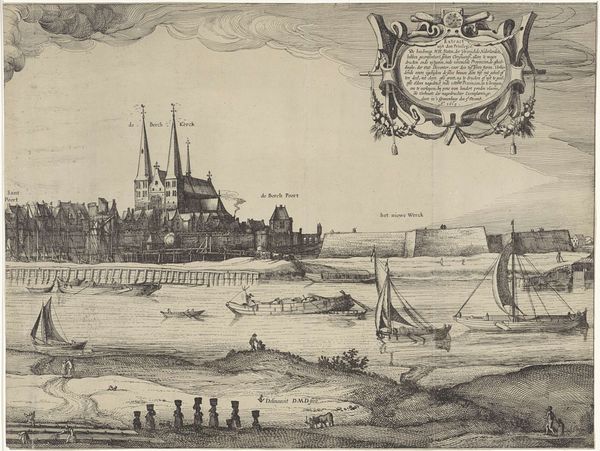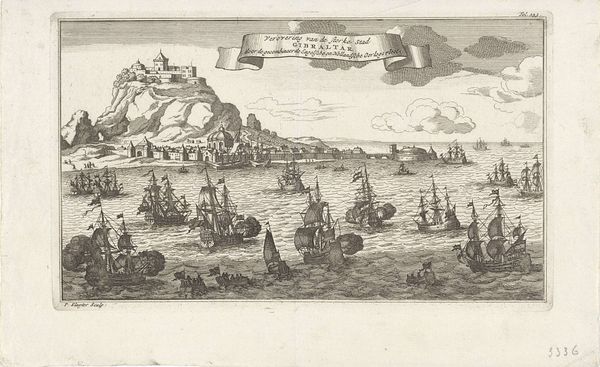
print, engraving
#
dutch-golden-age
#
mechanical pen drawing
# print
#
pen sketch
#
old engraving style
#
landscape
#
personal sketchbook
#
ink drawing experimentation
#
pen-ink sketch
#
pen work
#
sketchbook drawing
#
cityscape
#
storyboard and sketchbook work
#
sketchbook art
#
engraving
Dimensions: height 160 mm, width 208 mm
Copyright: Rijks Museum: Open Domain
Editor: This engraving, "View of Zeelandia," was created sometime between 1644 and 1646 by an anonymous artist. The detailed rendering of ships and fortifications is quite captivating. How does this piece speak to you? Curator: This print immediately makes me think about Dutch colonial power in the 17th century. The meticulously rendered ships symbolize trade and military might, but the real focus here seems to be the architecture on land, right? It's an image produced, and perhaps consumed, within the Netherlands to promote a strong, visual argument for the nation's presence overseas. What message do you think that sends to a Dutch audience? Editor: It portrays a very controlled and established power dynamic. It’s interesting how this image would influence public perception back in the Netherlands, perhaps bolstering national pride? Curator: Exactly. And notice the prominence of the fort. This wasn’t simply about trade; it was about projecting authority, control. These images often served as a form of visual propaganda, shaping public opinion and legitimizing colonial ventures. Do you see any indications of the local, indigenous population within the landscape? Editor: No, I don’t. The absence is notable, actually. It suggests a one-sided narrative, neglecting the impact of colonization on the native inhabitants. Curator: Precisely. By focusing solely on Dutch achievements and omitting the perspectives of the colonized, the print reinforces a Eurocentric view of history and subtly reinforces that political narrative. Editor: I never considered it that way. Seeing it as a deliberate piece of visual rhetoric really opens up a new perspective. Curator: Understanding the historical context is key. Analyzing these works allows us to unpack the complex relationship between art, power, and representation. It is important to examine not only what’s represented but also what’s strategically left out. Editor: Absolutely. It’s a reminder that even seemingly objective landscapes can be laden with ideological meaning.
Comments
No comments
Be the first to comment and join the conversation on the ultimate creative platform.
